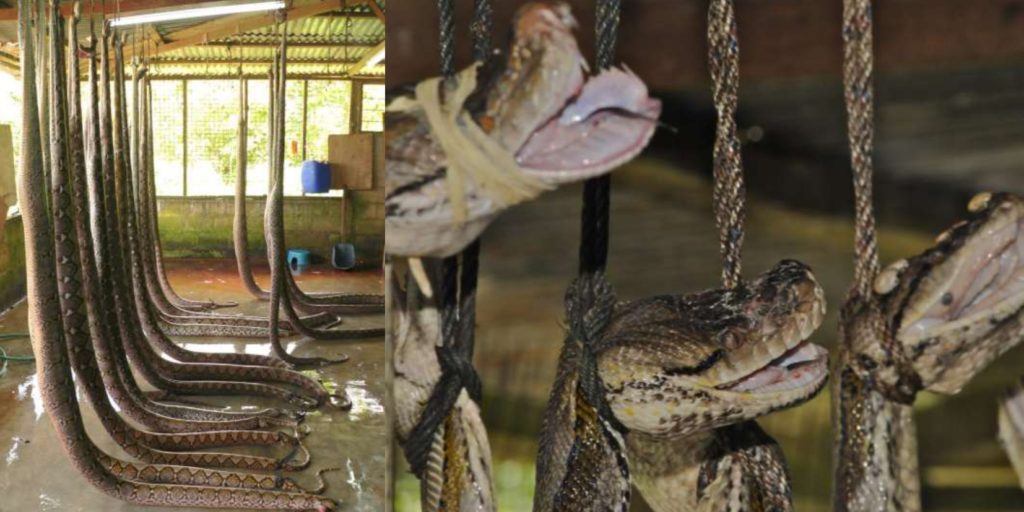One of the main threats to the collapse of populations of rare species is wild harvesting and illegal trade. Applicable solutions were sought at a political level and implemented the “Washington Convention on International Trade in Endangered Species of Wild Fauna and Flora” (CITES), which has regulated the global trade in animal species since 1973. Despite these efforts, the illegal trade in protected animals has developed into a serious criminal activity that is financially surpassed only by drug smuggling and human trafficking. According to the World Wildlife Crime Report (UNODC 2020), transnational environmental crime costs the world economy an estimated 100 to 260 billion US dollars. Of this, up to 23 billion is accounted for by the illegal trade in wildlife alone.

Illegal leather production snakeskins
In 2015, the German customs administration recorded nationwide more than 1,300 seizures of protected species. This involved more than half a million animals and their products out of 7,000 protected species (pers. comm., ZKA Cologne – German Customs Investigation Office).
Thus, international attention is mainly focused on large vertebrates, such as the savannah elephant, tiger, and rhino, whereas in Europe in particular, smaller vertebrate species are also key factors in the conservation of our biodiversity and play a considerable role in illegal wildlife trade.
Note:
According to estimates, the natural extinction rate was 0.001 ‰ per year, but according to more recent information, it is now closer to 0.1 or even 1 ‰ per year (Smithsonian National Museum of Natural History, “Extinction over time”).
The recent WWF Living Planet Report (2020) even declared that two-thirds of the 4,000 animal species disappeared between 1970 and 2016.

Poison Dart Frogs (Dendrobates tinctorius, CITES Appendix I) for sell at the Hamm reptile fair in Germany.

Pancake Tortoise (Malacochersus tornieri, CITES Appendix II) at a retail shop in Tokyo, Japan.

Reticulated Pythons (Malayopython r. reticulatus, CITES Appendix II), filled with water prior to being skinned in a reptile slaughterhouse, West Malaysia.

Decapitated Asian Water Monitors (Varanus salvator macromaculatus, CITES Appendix II) in a reptile slaughterhouse in West Malaysia.

Belly skin of an Asian Water Monitor before leather processing.
